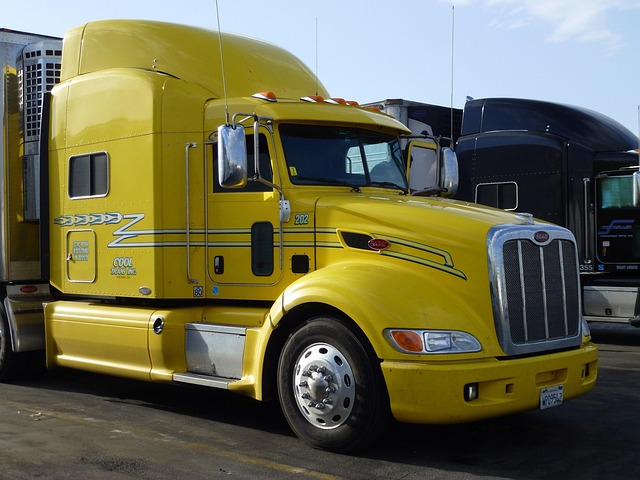Looking to register your car in California? This comprehensive guide will walk you through the process, ensuring a smooth experience. From understanding key requirements and gathering essential documents, to verifying your Vehicle Identification Number (VIN) accuracy using reliable VIN verifiers, this article covers it all. We’ll also detail how to complete the registration either online or in-person, and outline the fees involved. Get ready to hit the road legally!
- Understand California Car Registration Requirements
- Gather Necessary Documents for Car Registration
- Verify Vehicle Identification Number (VIN) Accuracy
- Complete Online or In-Person Car Registration Process
- Pay Car Registration Fees and Receive Your License Plate
Understand California Car Registration Requirements

Before registering your car in California, it’s crucial to understand the state’s specific requirements for vehicle identification number (VIN) verification. The California Department of Motor Vehicles (DMV) mandates a thorough inspection process to ensure the authenticity and accuracy of each vehicle’s VIN. This includes checking the condition of the vehicle’s registration documents, which can be efficiently facilitated through a mobile VIN verification service.
A key step in the registration process is ensuring that your car’s VIN is legitimate and matches the records on file. You can accomplish this by utilizing a mobile VIN inspection tool, which allows for remote verification directly from your smartphone or tablet. This modern approach streamlines the traditional vin inspection process, making it more accessible and convenient for California residents looking to register their vehicles.
Gather Necessary Documents for Car Registration

Before you begin the registration process, it’s crucial to gather all the essential documents. One critical step is to obtain a Vehicle Identification Number (VIN) verification report. This can be done through various methods, including a mobile vin verifier or by visiting a designated inspection station. The VIN is a unique code that identifies your vehicle, and having this information readily available streamlines the registration process.
Make sure you have your car’s title in hand, as it’s typically required for registration. Additionally, you’ll need proof of insurance, which can be presented through digital or paper formats. Other essential documents include a valid driver’s license and any applicable fees for registration and vehicle taxes. With these necessary documents prepared, you’re ready to move on to the next steps in registering your car in California.
Verify Vehicle Identification Number (VIN) Accuracy

Before registering your vehicle in California, it’s crucial to ensure that the Vehicle Identification Number (VIN) is accurate and legitimate. This unique 17-character code is a critical component of your car’s history and safety features. A simple yet effective step you can take is to get a VIN verification done by a trusted mobile vin inspection service or using a reliable vin verifier tool.
Accurate VIN data ensures that the vehicle parts are genuine, prevents theft, and helps in identifying recall issues specific to your car model. With modern technology at hand, you can easily cross-reference the provided VIN with official databases to confirm its authenticity. This step is often overlooked but is an essential part of the registration process, ensuring a smooth and legal experience when registering your vehicle in California.
Complete Online or In-Person Car Registration Process

In California, registering a car involves either completing the process online or in-person at a DMV office. Both methods offer convenience and efficiency for vehicle owners. For those who prefer technology, the online registration process is straightforward and user-friendly, allowing you to submit all necessary documents electronically. This method saves time and often results in faster processing times compared to traditional in-person visits.
Alternatively, visiting a DMV office remains an option for those who need more personalized assistance or have specific requirements. A mobile VIN verifier can be particularly useful during this process, as it enables on-site verification of your vehicle’s unique Vehicle Identification Number (VIN). This ensures accuracy and streamlines the registration, especially when dealing with complex cases or historical vehicles that may require additional scrutiny.
Pay Car Registration Fees and Receive Your License Plate

After verifying your vehicle’s eligibility for registration through a VIN verifier, the next step is to pay the required fees. California’s Department of Motor Vehicles (DMV) outlines these costs on their website, which include both base registration and various optional fees based on your vehicle type and use. You can typically pay online, by phone, or in person at a DMV field office. Once your payment is processed, you’ll be issued a registration certificate and, if applicable, new license plates.
For convenience, many California residents opt for a mobile vin inspection or vin verification service to save time. These services send a licensed inspector to your location to complete the necessary paperwork and issue your license plates, ensuring a seamless and stress-free registration process.
Registering a car in California is a straightforward process that requires understanding the state’s requirements, gathering essential documents, and ensuring your Vehicle Identification Number (VIN) is accurate. You can choose to complete the registration online or in-person. After paying the necessary fees, you’ll receive your license plate, marking the successful conclusion of the registration process, including the use of a reliable VIN verifier.
